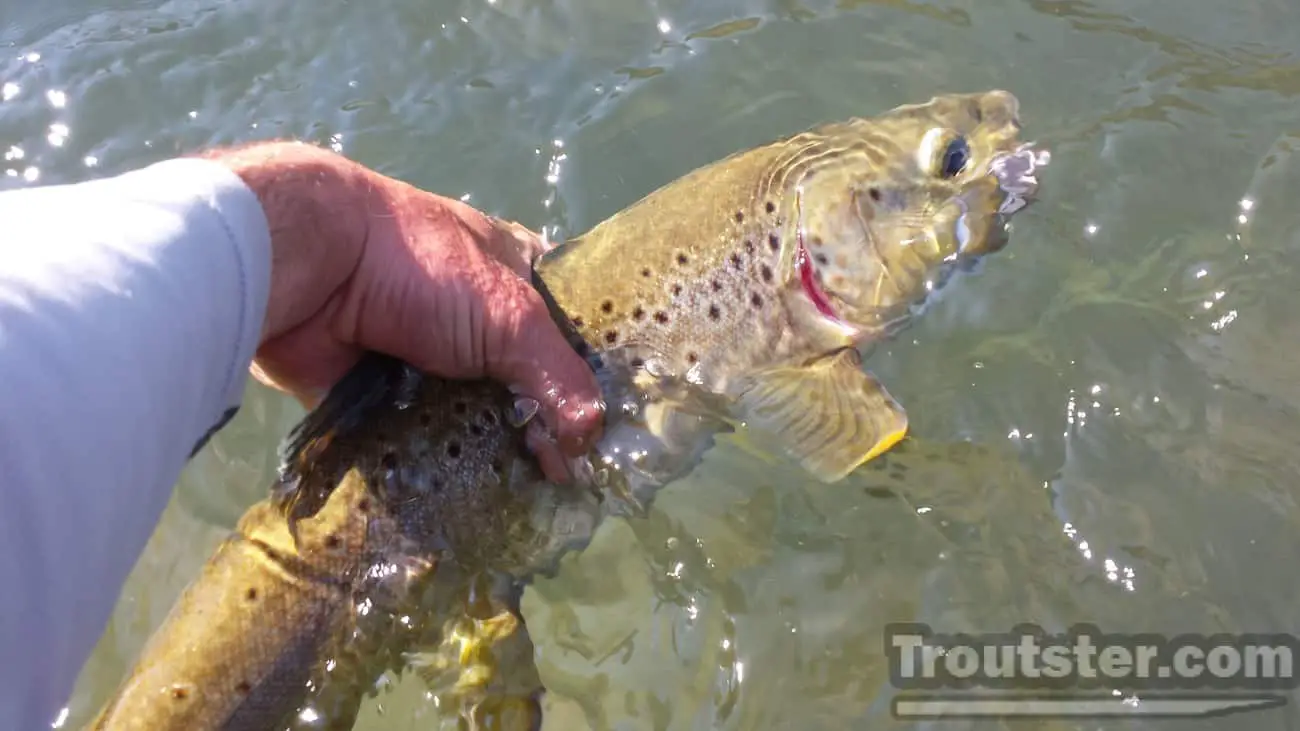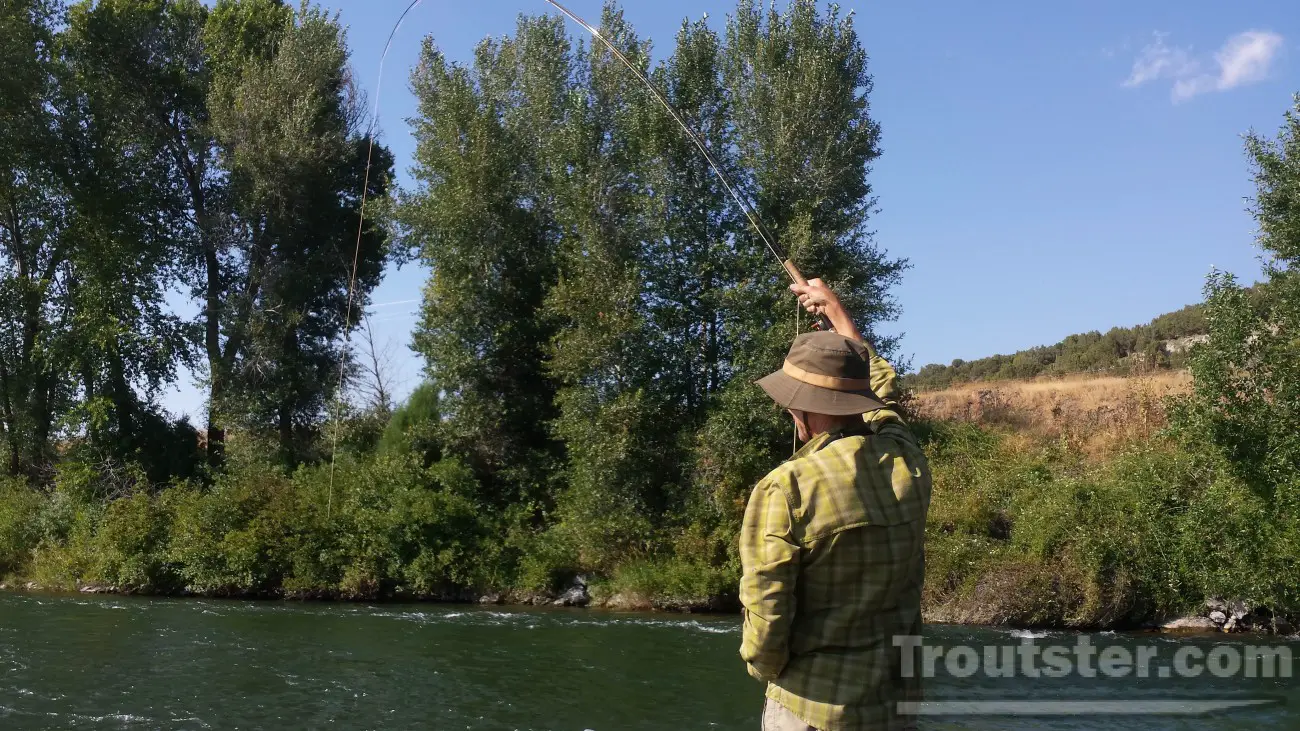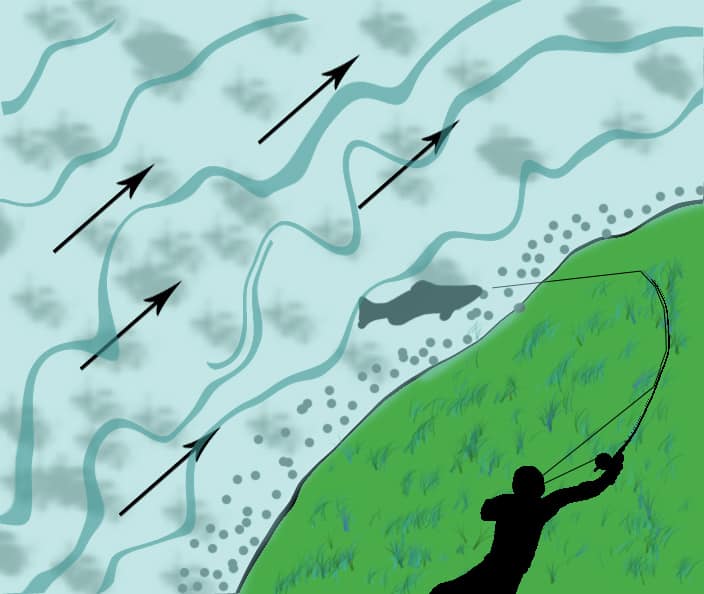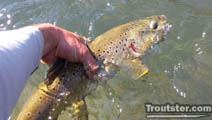This post was last updated on November 15th, 2014 at 10:19 pm
 We have all suffered the loss of large trout to log jams and rocks during a hard battle. In this article I hope to offer some ways you might not have considered to help you land large fish in tight situations.
We have all suffered the loss of large trout to log jams and rocks during a hard battle. In this article I hope to offer some ways you might not have considered to help you land large fish in tight situations.
I recently posted an article about fishing for trout in smaller rivers which you might be interested in, but I didn’t get into how to land them under these tough conditions.
Bring a Net
A small trout fishing net can help a lot to get that trophy small stream fish in front of your camera. In tight conditions where there is no easy shoreline to bring the fish into the shallows, the ability to scoop it up as it flows past in slightly deep water will help a lot. Learning to properly direct a fish toward your net is a skill that might take a bit of time, but placing your rod above your head and canting your wrist in the proper direction will put it exactly where you want it.
Netting Fish in Faster Water as they Flow By
Often times this will require you to move quickly (or even run) to get into a downstream position to await the trout’s arrival. Apply upstream pressure on the fish by extending your rod straight upstream of your position, you should try to keep its head pointing upstream, with your net waiting downstream the fish will drift right into it before it knows what happened.
Avoiding Logs and other Obstructions

Any large trout will naturally gravitate towards cover after it has been hooked, to combat this you will need to keep a close eye on anything that could foul up your plans to land that giant! Trying to pull a fish away from a rock after it is already determined to get there is risky, the key is to watch where the trout is heading and foil it’s plan well in advance. If a trout is on the right bank and charging downstream toward a cluster of logs, by moving toward the other bank and applying pressure you can easily change his course, but waiting until he is 5 feet from the logs to try to turn him will be a mistake.
The Beaching Method

If you are fighting a warlord and can’t get him to the net an easy way to get it into your hands is by beaching it on a shallow bank. Normally this will require you to move out of the water onto the bank and tilt your rod toward the most desirable landing area. Even the largest of trout can be manipulated into very shallow water (or even out of the water) on the inside of a river bend with consistent pressure.

